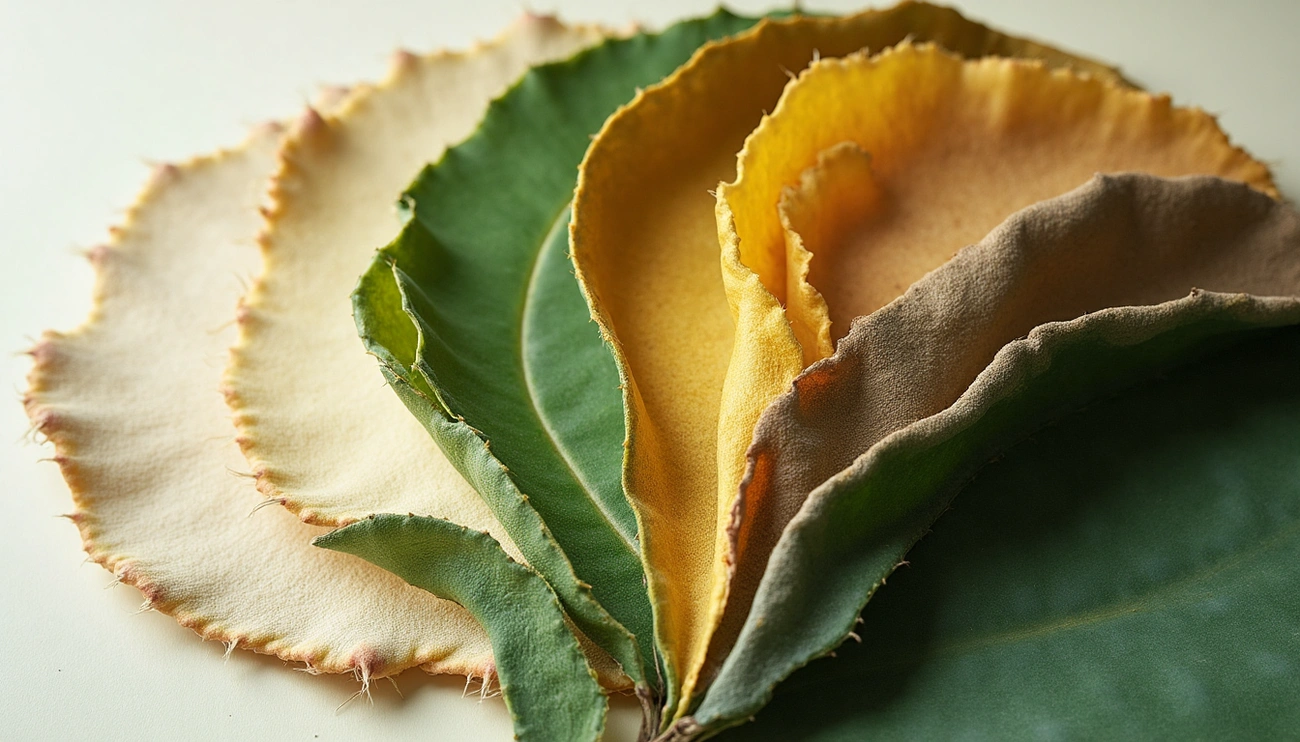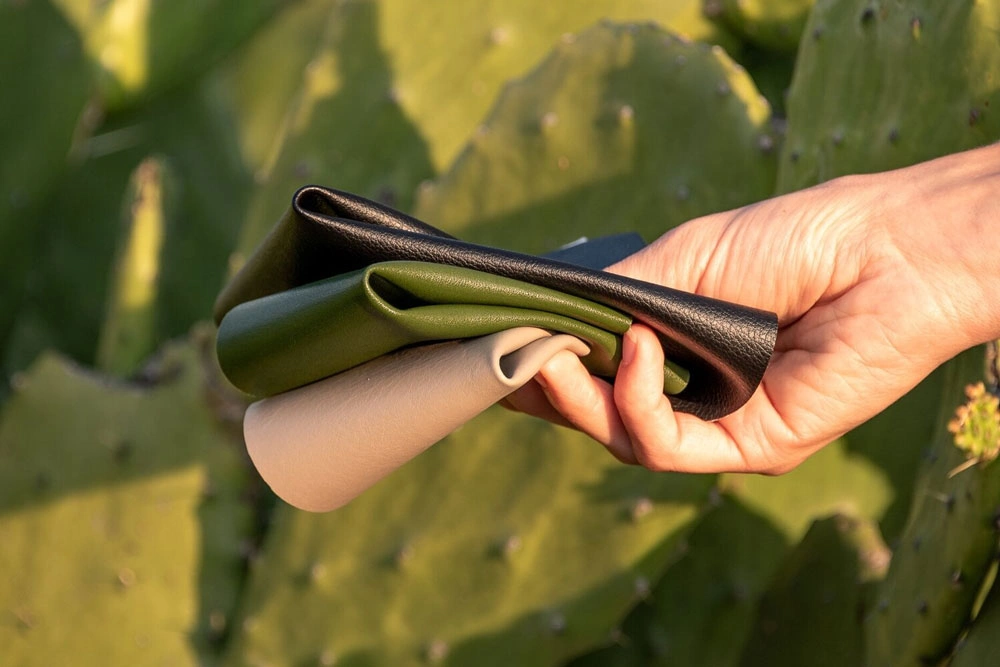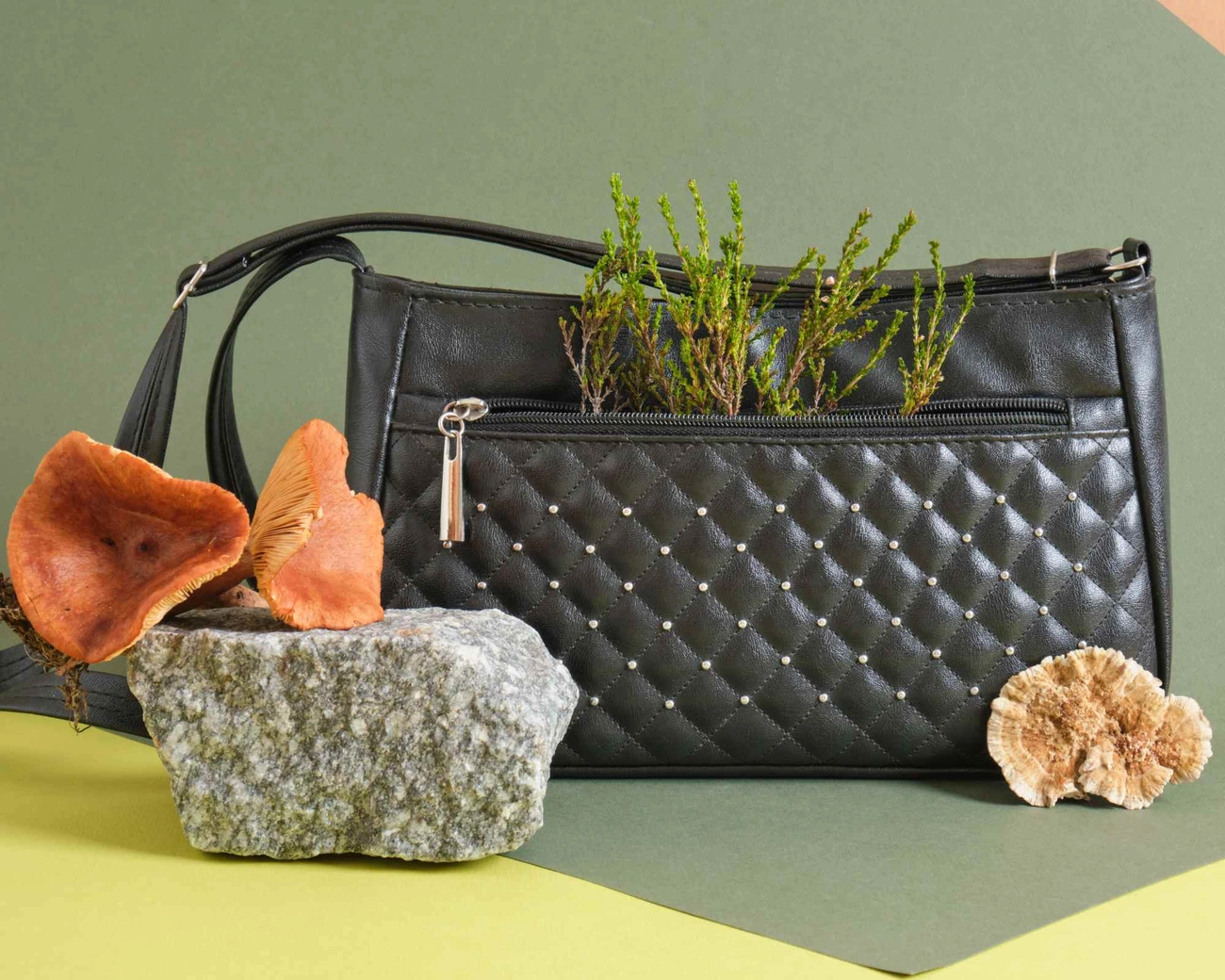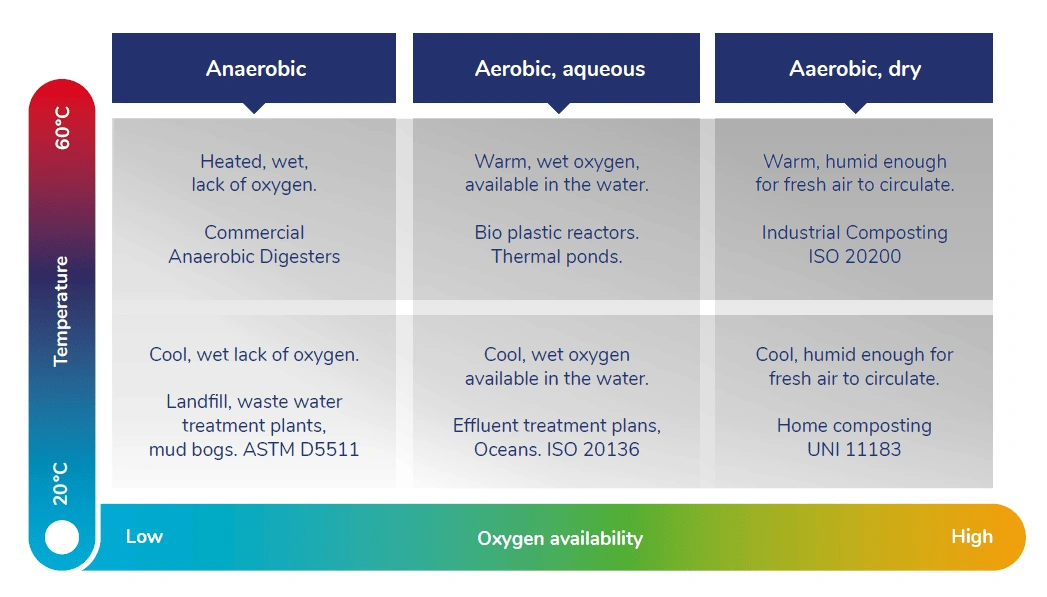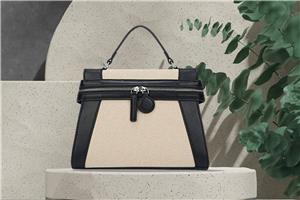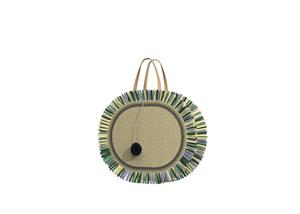Plant-Based Leather: The Science Behind Sustainable Material Innovation
Plant-Based Leather: The Science Behind Sustainable Material Innovation
You might be surprised to learn that making just one square meter of plant-based leather requires 480 pineapple leaves. This revolutionary material is changing the fashion industry as it turns agricultural waste into stylish, green alternatives.
Plant-based leather comes from unexpected sources like pineapple leaves, mushrooms, corn, apple peels, and even recycled plastic. These eco-friendly leather alternatives are great for the environment too. Apple leather production cuts down CO2 emissions by 5.28 kilograms for every kilogram of apple waste used instead of regular materials. Cactus leather stands out because it's 92% biodegradable with organic carbon content and lasts up to ten years. Bio-Tex, another sustainable leather alternative, could slash greenhouse gas emissions by 91% compared to traditional chrome-tanned leather.
This piece will show you the science that powers these innovative materials and how waste becomes wearable fashion. You'll see what makes plant-based leather bags both sustainable and practical. We'll explore how different vegan leather options perform and look at the roadblocks to their wider adoption.
The Science Behind Plant-Based Leather Materials
Image Source: HZCORK
The molecular structure of plant-based leather centers on natural polymers that give it shape and strength. These innovative materials match traditional leather's qualities through engineered blends of plant compounds, fungi, and environmentally responsible binding agents.
Cellulose, lignin, and mycelium as structural bases
We used cellulose as the main component in plant-derived leather alternatives. This natural complex carbohydrate polymer consists of repeating glucose units that add stiffness to plant cell walls. Materials like Piñatex® blend cellulose from pineapple leaf fibers with corn-derived polylactic acid to create a leather-like foundation.
Mycelium, the vegetative part of fungi, shows great promise as a structural base. Its cell walls contain branching, fibrous networks with a special mix of chitin, glucans, and glycoproteins that make it flexible and strong. The mechanical properties of mycelium-based leathers depend on the ratio of chitin/chitosan to glucan. Companies often use fungal species like Ganoderma, Trametes, and Fomes because of their growth patterns and polysaccharide makeup.
Animal skin's structure inspires many mycelium-based materials. Research shows F. fomentarius mycelial pulp films are stronger than both Reishi™ and synthetic mycelium. T. versicolor's cellulose felt proves stronger than artificial leather.
Role of biopolymers and bio-resins in durability
Biopolymers determine the physical qualities of plant-based leathers. Chitin from mushrooms can reach tensile strengths up to 3.0 GPa. This makes it perfect for creating strong biodegradable leather alternatives. When combined with natural tannins like tannic acid, these chitin-based leathers show excellent strength and fight bacteria.
All the same, dried mycelium materials become stiff and brittle. Plasticizing agents help maintain flexibility. These include:
Polyols such as propylene glycol
Sugar alcohols and glycerol esters
Epoxy esters and plant-based oils
Crosslinking substantially boosts durability. Chemical crosslinking of biopolymers like cellulose or chitin with citric acid, polycarboxylic acid, or natural tannins creates stronger, stiffer material while keeping it flexible. Coating techniques from traditional leather manufacturing can improve these properties further.
Water-based PU vs petroleum-based PU coatings
Plant-based leathers often need polyurethane (PU) coatings to last longer. Water-based PU has become an environmentally responsible choice compared to petroleum-based options. This material has three layers: a surface layer, tack coat, and base fabric made with water-soluble acrylic material.
Water-based PU contains no volatile organic compounds, unlike its petroleum-based counterpart. The manufacturing process creates no pollution or waste gasses. Water-based PU leather produces less carbon dioxide than regular PU leather. Each kilogram of plant material that replaces petroleum-based PU saves about 5.28 kilograms of CO₂ emissions.
Waterborne PUs (WPUs) mix with water solutions (about 80% water). These provide environmentally responsible alternatives to solvent-based systems that face restrictions due to toxicity. WPUs cost more and don't graft well, but their low volatile organic compound content and non-flammable nature make them popular in environmentally responsible leather production.
Material Innovation: From Waste to Wearable
Image Source: Good On You
New ways to turn industrial waste into fashionable materials represent a breakthrough in sustainable manufacturing. These state-of-the-art materials help solve waste management problems and reduce environmental damage from traditional leather production.
AppleSkin: powdered apple waste and PU blend
AppleSkin gives new life to discarded peels and cores from apple juice production by turning them into premium leather alternatives. This remarkable material blends what would be landfill waste with water-based polyurethane to create durable, flexible fabric. The manufacturing process dries and turns apple waste into fine powder, which gets mixed with water-based polyurethane and coated onto textile backing.
The material's plant-based content stands at 66%, earning it USDA certification. Manufacturers use recycled polyester or plant-based fibers like Lyocell as backing materials to boost sustainability. AppleSkin strikes a perfect balance - half apple waste and half PU - making it perfect for fashion accessories.
Recent life cycle studies show AppleSkin outperforms regular synthetic leather in several environmental aspects, especially in protecting the ozone layer, land use, and preventing marine pollution. The material's paper-like texture makes it suitable for many designs and uses.
Desserto: cactus powder and bio-resin matrix
Mexican-developed Desserto uses mature leaves from organic Nopal cactus to create an environmentally responsible leather alternative. The cactus grows naturally without irrigation, fertilizers, or pesticides in dry conditions. Farmers collect only mature leaves every six to eight months, which lets the plant keep growing for about eight years.
Sun-drying the leaves takes three days before lab work extracts proteins and separates fibers. The final material contains a special bio-polymer made partly from organic renewable compounds. The company's best formulations reach 90% plant-based content.
A single hectare of Nopal cactus absorbs about 8,100 tons of CO2 yearly while supporting biodiversity and creating jobs in previously unused dry lands. The material breaks down naturally under certain conditions, with decomposition rates varying by formula.
Mylo: vertical farming of mycelium
Mylo brings a fresh approach to leather alternatives through carefully grown mycelium - mushrooms' root structure. Bolt Threads grows mycelium in vertical farms powered by renewable energy. The whole process takes just two weeks, unlike the years needed for raising cattle.
Production begins by combining fungal cells with sawdust and organic materials in controlled settings. The growing mycelium creates dense networks that form soft, foam-like mats. After harvest, leftover materials become compost, creating an almost perfect recycling loop.
Today's Mylo consists of 85% fungal mycelium and 15% lyocell, finished with water-based polyurethane for better durability. A gold-rated Leather Working Group tannery colors the material using bluesign®-certified dyes that protect the environment.
Though Bolt Threads paused Mylo production in 2023 due to funding issues, the material has got substantial industry interest. Big names like Stella McCartney, Adidas, Lululemon, and Kering joined the "Mylo Consortium" to explore commercial uses. Popular products include Adidas' Stan Smith Mylo™ sneakers and Stella McCartney's Frayme Mylo™ handbag.
Performance and Biodegradability Trade-offs
Image Source: Nera Tanning
Making eco-friendly leather alternatives requires balancing multiple priorities. Traditional leather's excellent performance often clashes with environmental needs, which forces designers to make tough choices.
Durability vs compostability in hybrid leathers
The main challenge in developing plant-based leather lies in how material stability and biodegradability work against each other. Materials that last longer usually break down poorly, which creates a design problem. To name just one example, chrome-tanned leather shows much lower biodegradation (20.3% after 9 days) compared to chrome-free alternatives (54.3-66.0%). The crosslinking network that makes materials stable also makes them resist microbial breakdown.
Better tanning methods make materials stronger but less biodegradable. This creates a tough situation for manufacturers. Materials that last longer create waste that sticks around. All but one of these hybrid plant-plastic leathers can't be composted or recycled because their natural and synthetic parts create materials that don't fit either category.
Impact of synthetic backings on recyclability
Textile backings limit plant-based leather's green credentials. Most of these materials use PET, polyamide, or cotton backings with polymer coating layers (usually PVC or polyurethane). These components stick together, which makes recycling almost impossible.
Plant-plastic hybrid leathers don't work well on either front – they can't be recycled like pure synthetics or composted like natural products. Sustainability experts explain there's no middle ground with biodegradability – materials either break down completely or they don't.
Some manufacturers tackle this problem by developing pure PBS (polybutylene succinate) backing materials. These materials come from biological sources and break down naturally, which could lead to better recycling.
Biodegradability in controlled vs natural environments
Lab tests show big differences between how materials break down in industrial settings versus nature. Bovine leather treated with alginate derivatives broke down fully in 21-25 days under industrial composting conditions. Traditional chrome-tanned leather needed 31-35 days. Vegetable-tanned leather barely started breaking down after 60 days.
Popular plant-based alternatives like Piñatex®, Desserto®, and regular leatherette didn't break down at all after 90 days of industrial composting. Their plastic content, mostly PU and PVC components, caused this surprising result.
The difference in breakdown rates shows why certification standards matter. Many materials sold as eco-friendly might break down in labs but stay intact in real-life conditions. Understanding specific test conditions gives us the full picture of environmental effects.
Plastic-Free and Circular Alternatives
Plant-based leather has evolved beyond hybrid materials to eliminate plastic completely. These breakthroughs are the foundations of truly circular fashion materials.
Mirum: 100% plant-based and recyclable
Mirum leads the way as the first adaptable, completely plastic-free leather alternative. Natural rubber, plant oils, natural pigments, and minerals with zero petroleum inputs make up this material that employs a patented plant-based curative system. We combined virgin natural materials with upcycled agricultural side-streams to create a material that needs no water during manufacturing or dyeing.
Natural Fiber Welding and Stella McCartney have joined forces to develop Mirum for fashion applications. The designer now offers two versions: Mirum with organic cotton backing and Mirum with California regenerative cotton backing. You can trace the latter to farm level with support from the California Cotton & Climate Coalition.
Mirum's environmental impact stands out with a very low carbon footprint compared to both conventional leather and synthetic alternatives. On top of that, it has earned USDA certification as 100% biobased.
TômTex: chitosan from shrimp shells and mushrooms
TômTex ("shrimp textile" in Vietnamese) turns seafood industry waste into biodegradable leather. The material contains 100% chitosan, a biopolymer that comes from chitin—the structural component in crustacean shells and mushroom cell walls.
Manufacturers process chitosan flakes into a viscous liquid they can pour into molds, stamp, or even 3D-print. Natural pigments like charcoal, coffee, and ochre add color. This approach tackles two challenges at once: creating biodegradable garment materials and finding new uses for marine waste.
Vegans can choose a mushroom-based version of TômTex. One square meter of TômTex produces about 14 kilograms of CO2 equivalent—nowhere near the emissions from cow-skin leather.
Treekind: compostable wood-based leather
Treekind brings a fresh perspective with its patented mix of lignocellulose from fallen tree leaves and an algae binder. This material can be recycled and composted at home. The product contains no plastic and has earned the USDA 100% Certified Biobased label.
Making Treekind uses less than 0.1% of the water needed for conventional leather processing. The material has passed extensive ISO testing for leather goods, showing good results in tensile strength, elongation, flexibility, water resistance, and UV stability.
Treekind comes in 0.6-1.6mm thickness and breaks down in soil or water within a year with help from microbes. Eurofins Ecotoxicology in France has verified its compostability through the ISO 14855-1 home composting test.
Adoption Challenges and Industry Outlook
Image Source: POMP store
Plant-based leather development shows promise, but the industry faces several roadblocks to widespread adoption. Moving from lab success to market viability means overcoming major practical and economic challenges.
Cost and scalability of next-gen materials
The high production costs make it hard for plant-based leather makers to compete with traditional leather. Complex processing techniques and technology requirements limit scalability and drain resources.
Too many competing feedstock options leave investors, brands, and suppliers stuck in decision paralysis. Waste-derived materials might seem cheap to source, but getting and moving this waste creates new problems. Quality control and consistency become major hurdles.
Purpose-grown crops come with their own set of challenges. Agricultural management costs soar and concerns about water and land use multiply. The plant-based leathers that will succeed are those that can handle scalability, durability, practical use, and cost all at once.
Fashion industry uptake: Stella McCartney, H&M, Allbirds
Stella McCartney leads the way with their Mylo Frayme handbag, which debuted at Paris Fashion Week and should hit stores soon. Ralph Lauren and Allbirds work with Natural Fiber Welding to use Mirum in their products.
Some brands might hesitate, but H&M accepts new ideas through their work with Good News to create footwear using Bananatex and grape-based Vegea. Capri Holdings bought a 30 percent stake in Adriano Di Marti, who makes Desserto cactus leather.
Nanushka, a Hungarian brand, created their own material called Okobor—a 50/50 mix of recycled polyester and polyurethane. They made this choice because existing options didn't meet their quality standards. Designers now face limited choices in color and texture with next-gen materials.
Certifications: USDA Biopreferred, OEKO-TEX, PETA Vegan
Certifications build trust for plant-based leather alternatives. AppleSkin has earned several key certifications: PETA approved Vegan status, USDA Biopreferred approval, and OEKO-TEX certification. Materials like Mirum have also gotten USDA 100% biobased designation.
These certifications show vital differences between materials. Reformation launched Cereal Leather with USDA biopreferred status, which shows it's made mostly from natural cereals and grains. Yet most materials still need some synthetic parts, which makes totally plastic-free options rare and valuable for certification.
Manufacturers must balance their marketing claims with actual material properties carefully. Brands like Ganni stick to sharing factual material compositions to stay transparent, rather than making big environmental claims.
Conclusion
Plant-based leather marks a breakthrough in sustainable fashion. It gives us alternatives that don't deal very well with environmental issues while meeting what consumers just need in ethical products. You've found how agricultural waste turns into wearable fashion through innovative processes. Pineapple leaves, apple cores, cactus pads, and mushroom mycelium are the foundations of materials that reduce environmental impact by a lot compared to traditional leather.
The sort of thing I love about these materials shows amazing progress in biopolymer engineering. Cellulose, lignin, and mycelium provide structural bases. Natural binding agents create durability without depending on petroleum-based products. Water-based PU coatings offer big improvements over traditional petroleum-based options. They cut CO₂ emissions by 5.28 kilograms per kilogram of material.
These plant-based leathers face a basic challenge - balancing performance with environmental credentials. Materials built to last often give up biodegradability. This creates a tough choice for designers and manufacturers. Synthetic backings make things more complex. These hybrid materials end up neither fully biodegradable nor properly recyclable.
New eco-friendly options have emerged to fix these problems. Mirum leads the way as a completely plastic-free option that mixes natural rubber with plant oils. TômTex uses chitosan from seafood industry waste. Treekind changes fallen leaves into compostable leather. These biodegradable choices point to what a world of sustainable fashion accessories might look like.
High costs and scaling issues limit widespread use right now. But major brands like Stella McCartney, H&M, and Allbirds have adopted these materials. As production improves and consumer demand grows, plant-based leather should become more available and affordable.
The leather alternatives' future depends on balancing competing priorities - performance, biodegradability, affordable solutions, and looks. Certifications like USDA Biopreferred and PETA Vegan approval are a great way to get guidance for conscious consumers exploring these options. This knowledge about breakthrough materials helps you make smart choices that match your style priorities and environmental values when buying your next leather-alternative accessory.
FAQs
Q1. What makes plant-based leather innovative and sustainable? Plant-based leather is innovative because it transforms agricultural waste into wearable fashion. It's more sustainable than traditional leather, significantly reducing water usage, CO2 emissions, and reliance on animal products. Materials like cactus leather, apple leather, and mycelium-based alternatives offer durability while addressing environmental concerns.
Q2. How do plant-based leathers compare to traditional leather in terms of performance? Plant-based leathers can offer comparable durability and flexibility to traditional leather, depending on the specific material and manufacturing process. However, there's often a trade-off between performance and biodegradability. Some plant-based options excel in certain properties like water resistance or tensile strength, while others prioritize compostability.
Q3. Are all plant-based leathers biodegradable? Not all plant-based leathers are biodegradable. Many contain synthetic components or coatings that impede decomposition. Fully biodegradable options like Treekind exist, but they're currently less common. The biodegradability of a material often depends on specific environmental conditions and may differ between controlled settings and natural environments.
Q4. Which major fashion brands are adopting plant-based leather alternatives? Several prominent brands have embraced plant-based leather alternatives. Stella McCartney has been a pioneer, incorporating materials like Mylo into their collections. H&M has collaborated with innovative material producers, while Allbirds and Ralph Lauren have partnered with Natural Fiber Welding to use Mirum. Other adopters include Adidas, Lululemon, and Ganni.
Q5. What challenges does the plant-based leather industry face? The main challenges include high production costs, scalability issues, and achieving consistent quality across large volumes. There's also the complex balance between performance, sustainability, and esthetic appeal. Additionally, the industry faces hurdles in educating consumers about these new materials and overcoming skepticism about their durability and eco-friendliness compared to traditional leather.

